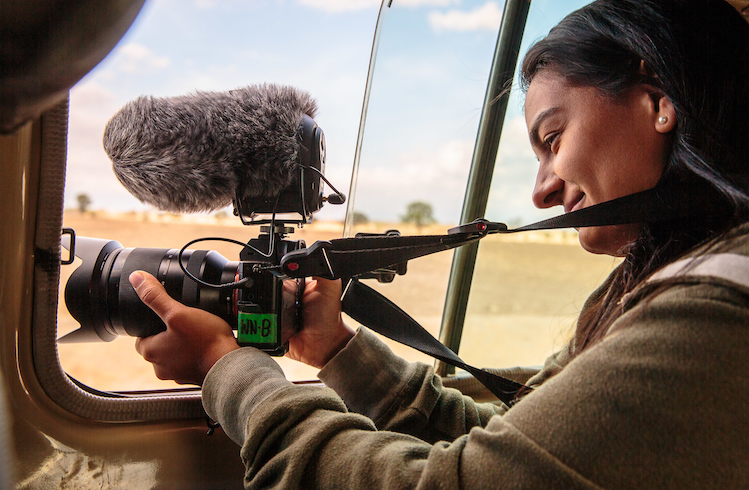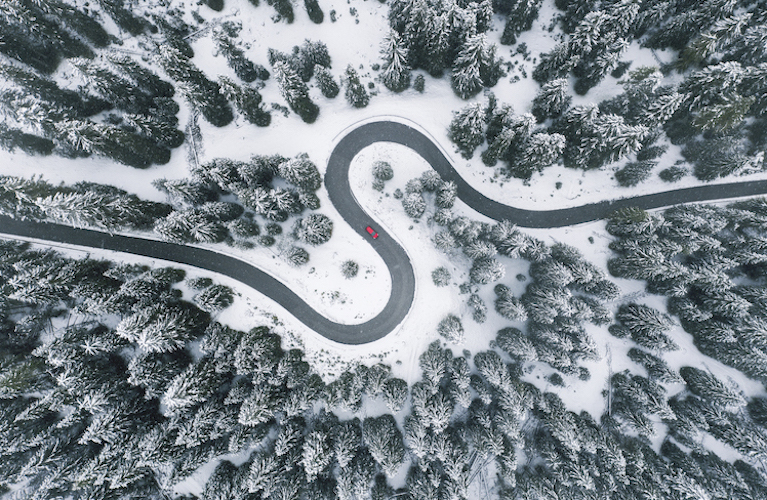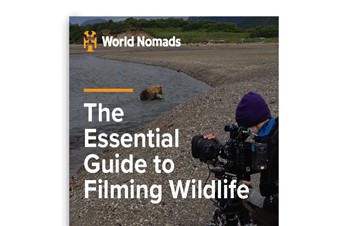Well thought-out sound design will elevate your travel video from good to great. Here's how.
 Photo © Brian Rapsey
Photo © Brian Rapsey
- The importance of sound design
- Plan ahead
- Setting the pace
- Creating atmosphere
- The sound of missing sound
- Voiceover and dialogue
- Recording sound
- Using sound libraries
- Post-production sound editing
The time has come and you are finally traveling to that destination that made you dream of shooting an amazing travel video with stunning visuals that everyone will love. You have packed your camera, a nice set of prime and zoom lenses, a bunch of batteries, a lightweight tripod, a pocketable drone, and even a gimbal. You’re all set. Are you all set?
If you are not taking a good microphone with you, you are not fully packed. Sound is essential to storytelling and a powerful video needs not only eye-catching images but also meticulously crafted sound design.
The importance of sound design
Sound design (SD) is the art of creating a world for our story through sound. How much detail and dedication we build that world of sounds with will mean either the step up to our ideal video or the slide to an audiovisual nightmare.
In short: we might watch to the end, or even enjoy, a video with poor image quality but distorting or inaudible audio will hurt everyone’s eardrums and make our followers block us forever on their social networks.
So, we need to work on SD.
Plan ahead
Leaving SD to be 100% done in post-production can be tricky. Especially now that we know that sound dimension is key to film production, why not get to the field with a nice and clear goal that we can keep in mind while filming?
You should always plan your sound design in scriptwriting. This will allow you to choose the correct location for your shots and to re-shoot any scene where you identify unexpected noises that will ruin the desired atmosphere. In the end, thinking about sound design during pre-production will always mean saving a lot of time in post.
A good SD plan for a travel video should consider music, ambient and background, sound effects (SFX) and voice-over and dialogue, all of them part of the sound dimension of any video.
Setting the pace
Music will be your first tool to set the pace and mood of your story and should be chosen wisely. The process of finding the right music track for your video might take hours of diving into music libraries, so patience is key. Many times you will find tracks you like but that don’t match the current project – it’s always a good idea to use those as spare tracks to build a personal music library that will save you time on future projects.
Can you look for music in post-production? Definitely, but finding the correct music track before the shooting can help you understand what the final mood of the video will be and, therefore, to get your shots and your talents to match that epic, romantic or emotional mood.

Creating atmosphere
Ambient and background sounds will dress up your story. Every space has a sound that belongs to it, and you can even recreate it in your mind places through subtle sounds that will transport you directly to the spot where you first heard them. That’s why it’s so important to have a list of sounds to be captured in the field and that will mean the world later on in post-production to create a unique atmosphere for your location.
As a general rule, take your time on location to recognize sounds that you might not have thought of when building your to-record list, and always capture as many sounds as you can: the more you record, the less you will need to spend on copyrighted sounds from music libraries.
The sound of missing sound
Can you think about an action or situation that creates no sound at all? If you imagine someone sleeping, you might hear the sound of their snoring. Think about an empty room of a house and you will notice the noise of a car passing by. Even when your subject is completely silent, the sound of their breathing will be there. All these sounds are essential to the actions they are the product of and not having them in sync will only create noise in our minds.
Yes! Naked actions make noise, so adding sound effects in post-production is a must. It’s all about timing and common sense: make sure they sound like what they are (a big truck sounds completely different to a small car), and in sync and you will have the work done.
And always remember: missing sound could be the noisiest.
Voice-over and dialogue
Voice-over and dialogue are powerful tools. They are not only key elements in the composition of sound – as they need to stand out from music – but they are also essential to drive the plot of your story. They also allow you to add diverse points of view and reflections to what you are showing with images.
To get the best out of these tools, it’s important to have a clean capture of voices, avoiding background interference of unwanted noises. Once in post-production, making them stand out is as easy as lowering the level of the music track. Another technique is applying a low-pass filter to the music track while the voice-over or dialogue needs to be prevalent.
Recording sound
Knowing the elements of sound dimension is basic, but none of the above would help if you don’t pay attention to details when recording your sounds. Here are some tips to make them sound nice and crisp.
- Choose the right mic. The camera's built-in mic is never the right mic. Just like when you spend extra money on a fast prime lens to improve your image quality, you should also invest in a good mic. You don’t need to take a loan to get the fanciest mic in the market, a shotgun like this is always reliable and should do the trick for a travel filmmaker that needs to get interviews, ambient and to travel light.
- Keep it to -6db to make sure your peaks never distort. You can always adjust the gain in post.
- Record many takes, then choose the best.
Using sound libraries
You might do your best to capture great ambiance and sound effects in the field but many times the context just doesn’t help. This is when sound libraries become your lifesaver. You can use the built-in filters to organize your search by mood, genre, instruments, length, etc.
These are some paid and free user-friendly sound libraries that are worth checking: Universal, Envato, Freesound.
Post-production sound editing
The last part of the magic happens in post. This is when you give life to your sound design and to do so, start by syncing clips and music: it makes everything look nicer. Just add markers to your music track to indicate beats and bars of your music track and then adjust the beginning and end of your clips to match the markers.
You don’t need your voice-over to exactly match your image on the screen. Actually, it’s always nice to have it start a few seconds before the image, kind of letting us know something about what is coming next. A sudden cut of the music is another way to emphasize a segment of voice-over or dialogue.
Once you’ve done these, start layering all the other sounds that will be part of your video. Use as many audio tracks as needed: that’s the way you will build your sound dimension with rich depth. You can also add SFX to your transitions to give them an accent.
Your music track might be longer than the total length of your video. In this case, you can go to the end of the music track and cut the last couple of bars to be pasted wherever you need the video to finish. Make sure you respect the times of the track when pasting it, but this will give a natural smooth ending to the video.
Once you have finished your sound mix, take your eyes off it, go for a walk, rest, and then come back later to listen to it again. You might find subtle adjustments to be done if you listen to it with fresh ears.
It’s also a good idea to listen to it on different devices (computer, phone, speaker, etc) to make sure the sound is good in all of them.
Travel video storytelling is the art of combining all your available resources to make people travel when they are actually not. To do so, the ultimate sound design will take you to the next level, offering a faithful experience for people watching your videos.
Related articles
Simple and flexible travel insurance
You can buy at home or while traveling, and claim online from anywhere in the world. With 150+ adventure activities covered and 24/7 emergency assistance.
Get a quote

No Comments